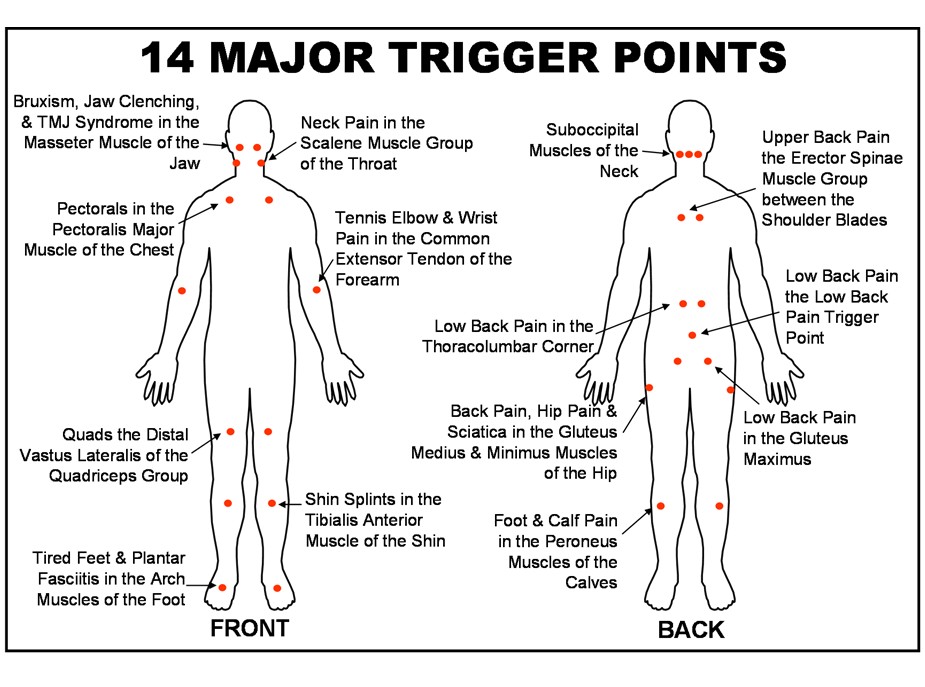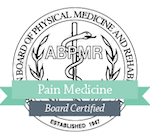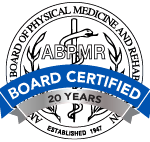
What are trigger points?
Painful muscles have been associated to “trigger points”.
But what is a trigger point?
A trigger point is a hyperirritable area of a tissue that is tender when compressed and can cause a referred pain. It could be a myofascial trigger point if it occurs in the muscle and fascia – the sheet of connective tissue beneath the skin, which separates the muscles from other internal organs. Trigger points can also occur in other types of connective tissue, such as ligaments, tendons, and skin. You’ll be able to notice a trigger point if an area of your muscle is in constant spasm with severe pain on movement or if pressure is applied over them.
These areas are called trigger points because they can ‘trigger’ or cause pain.
What is trigger point injection?
When non-specific general or conservative treatments, such as physical therapy or medication have failed to provide satisfactory pain relief, or when there is an area of persistent spasm (such as tightness in the neck or shoulder), pain specialists consider injection therapy.
Trigger point injection is a form of injection therapy, which is sometimes called as “direct wet needling”. This procedure usually takes only a few minutes. A fine needle is inserted into the areas of painful muscle. It involves injection of fluid directly into the trigger point located in the taut muscle band. An anesthetic or steroid (or combination of both) is injected in small amounts to reduce the pain and relax the muscles.
Most people who had trigger point injections reported only minor, temporary discomfort after the procedure. Physicians may also apply an anesthetic spray over the skin prior to the procedure to reduce the discomfort. If you anticipation of the pain is making you anxious, ask your doctor about this option.
How does trigger point injection work?
Professionals have proposed several mechanisms of action, each of which may be relevant in different modalities of trigger point injection. Recent studies say that the medication decreases sensitivity of the area and results in a pain free period. Other researches say that the injection disrupts the abnormal muscle fibres and nerve endings. Other modalities include interruption of the positive feedback mechanism that perpetuates pain; and counter-stimulation analogous to the effect of acupuncture therapy.
How soon will the trigger point injection treatment help?
A decrease in pain may be experienced shortly after the procedure due to the effects of the local anesthetic. Keep in mind that the steroid that has been injected will become effective in 48-72 hours. The steroid is the medication that will provide pain relief for a longer period of time.
Are there risks or complications with trigger point injections?
As with any procedure, there is a potential for problems. But in general, trigger point injections are very safe and the following problems are rare. Problems that could occur are:
- Bruising
- Bleeding at the injection site
- Infections at the injection site
What to do after trigger point injections?
After the injection therapy, you should take it easy for the rest of the day. Bed rest is not required however. The injected muscle may be sore for one to two days. Application of moist heat or ice can help reduce the soreness if it occurs.
You may apply ice to the site(s) 20 minutes on/ 20 minutes off on the day of the injection. At subsequent times, you may choose to apply ice or moist heat. Just remember not to apply either (hot or cold packs) for more than 20 minutes at a time.
References:
Taylor, M. T. (2010). My neck hurts!: Nonsurgical treatments for neck and upper back pain. Baltimore: Johns Hopkins University Press.
Retrieved January 16, 2017, from http://www.susquehannapaincenter.com/forms/TriggerPointInjections-web.pdf
Fortanasce, V., Gutkind, D., & Watkins, R. G. (2011). End back & neck pain. Champaign, IL: Human Kinetics Publishers.
Retrieved January 16, 2017, from http://www.ihe.ca/download/trigger_point_injections_for_chronic_non_malignant_musculoskeletal_pain.pdf



